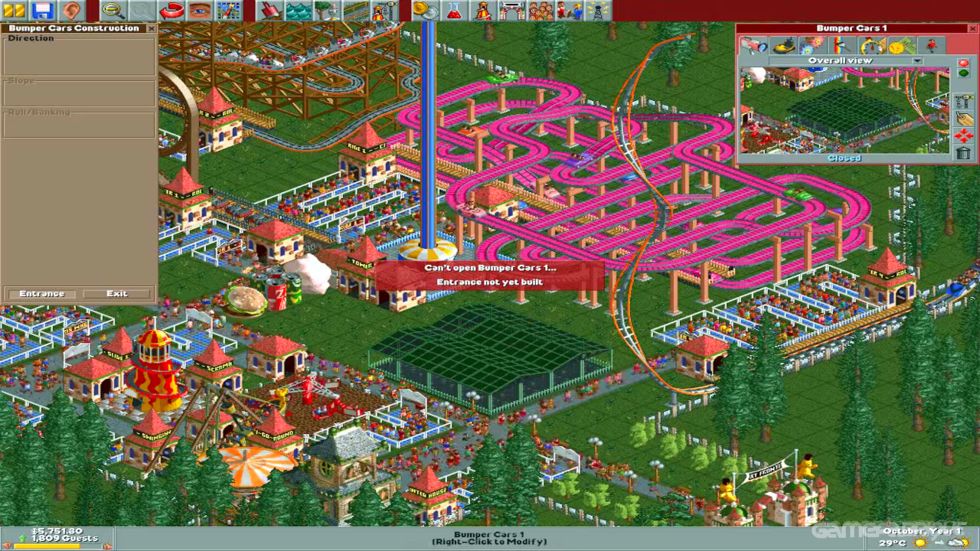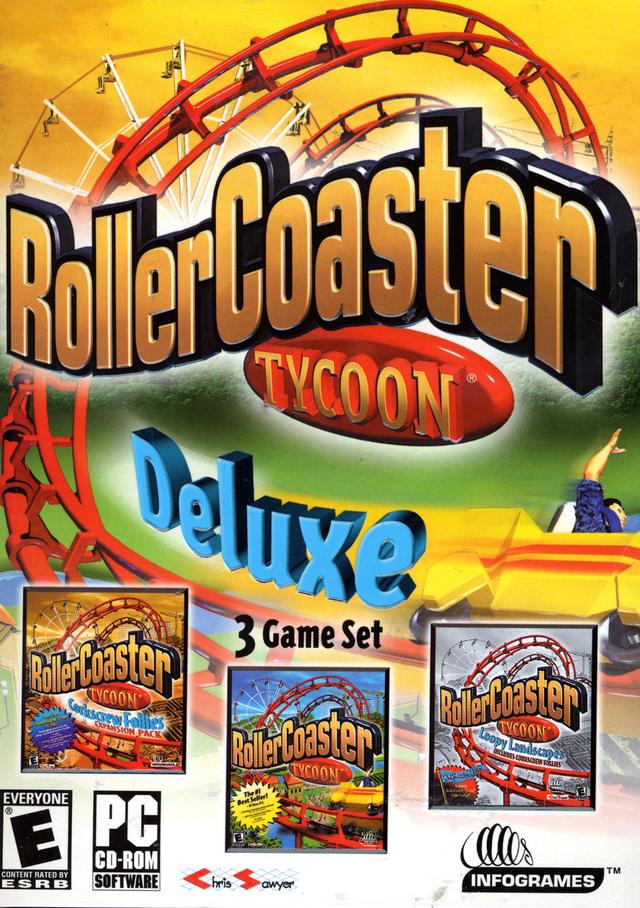
“I’d been programming in x86 for so long I rarely needed to look things up,” he says. This was enough for him although the full manuals run into thousands of pages, he’d memorised most of what he needed. (The game’s system requirements later called for an Intel Pentium 90mhz with at least 16 megabytes of RAM.) Also sat atop his command post were a dot matrix printer (he believes), a fax machine, a pocket guide to x86 assembly code, and a 500ish-page desktop reference. Sawyer gravitated to x86 assembly naturally, appreciating its clean presentation and lightning-fast compiling, and when he set out to make RollerCoaster Tycoon, he rigged two PCs: a fast one for coding and a slower one for testing.

With some tinkering, it allows you to go widescreen while preserving the original interface. The slower, cheaper option is to buy RollerCoaster Tycoon 2 and use the free OpenRCT2 utility to modernize the game.

As awkward as that sounds, it ain’t bad as a quick update to the interface and display settings. The first and easiest is to buy RollerCoaster Tycoon Classic, which is a PC port of the mobile port of the PC games.

There are two main options for revisiting the original RollerCoaster Tycoon games. The adjusted time-stamps on the save game files, there to safeguard against tampering or corruption, weren’t matching up. “Embarrassingly, it was a blatant bug on my part,” Sawyer says. Within a couple of hours, he had uncovered the connection. But Sawyer had a hunch: last night, daylight savings time had taken effect. After years of careful work, the game appeared to have self-destructed for mysterious reasons. In the forums, players were saying the game had somehow lost their progress and sent them back to square one in the game’s scenarios, which advance sequentially like levels.

In late March, the inaugural RollerCoaster Tycoon had landed on shelves in North America dripping with Sawyer’s contagious love of theme parks, and something appeared to have gone seriously wrong. On an early Sunday morning in April 1999, game designer Chris Sawyer was perched in his living room command center, a collection of ‘90s tech, browsing forums online.


 0 kommentar(er)
0 kommentar(er)
